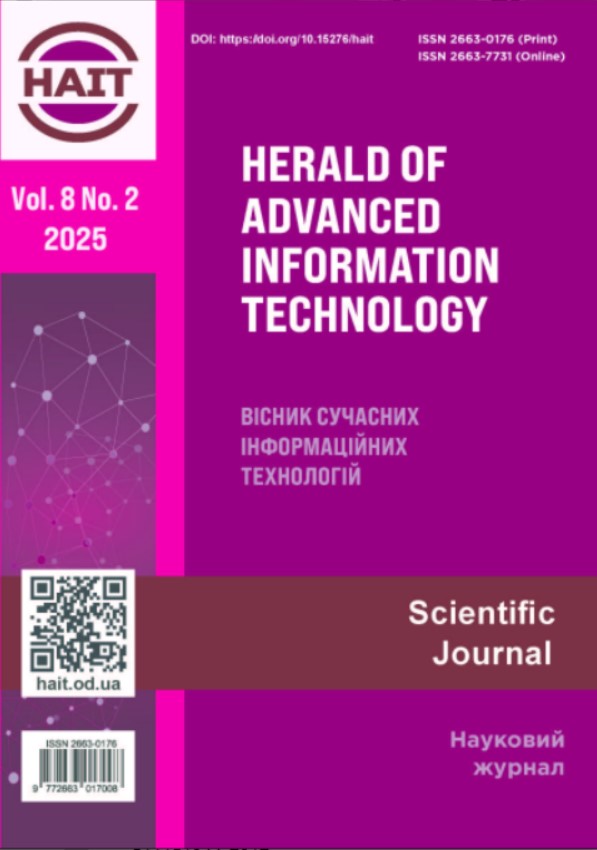Fuzzy models of wireless components sensor networks
Main Article Content
Abstract
The article addresses the problem of modeling wireless sensor network components operating under uncertainty and the influence of external factors. The relevance of the research stems from the growing need for reliable and autonomous monitoring and control systems in industrial environments, especially under conditions where wired communication is not feasible or consistent. Classical models with strictly defined input parameters fail to adequately reflect the dynamics and unpredictability of sensor node behavior and communication links, which limits the accuracy of performance assessment and complicates the design of robust systems. The aim of this study is to develop a formalized approach for describing wireless sensor network behavior under uncertainty using fuzzy logic and semantic representation. The proposed solution is based on a generalized modeling framework that utilizes the theory of fuzzy sets and supports both crisp and fuzzy input/output variables. Two universal formulations are introduced: one that models relationships solely between fuzzy variables, and another that links crisp parameters with fuzzy outputs. These models serve as a flexible basis for representing typical processes in wireless sensor networks, where parameters are often only partially known, qualitatively estimated, or described in linguistic terms. Variables are mapped into an orthogonal semantic space, allowing the use of membership functions for further reasoning and integration into ontological structures. Although detailed structural models of sensor nodes and communication channels are not included in this version and will be presented in a separate follow-up study, the current work lays the methodological groundwork for their development. The scientific novelty lies in the creation of a unified fuzzy modeling framework that supports both abstract and data-driven representations of uncertainty in wireless sensor networks. The practical significance is seen in the applicability of the proposed approach to designing adaptive, context-aware sensor networks capable of operating reliably in challenging and resource-constrained environments. The introduced models provide enhanced flexibility, semantic interpretability, and accuracy in representing real-world operational conditions.



